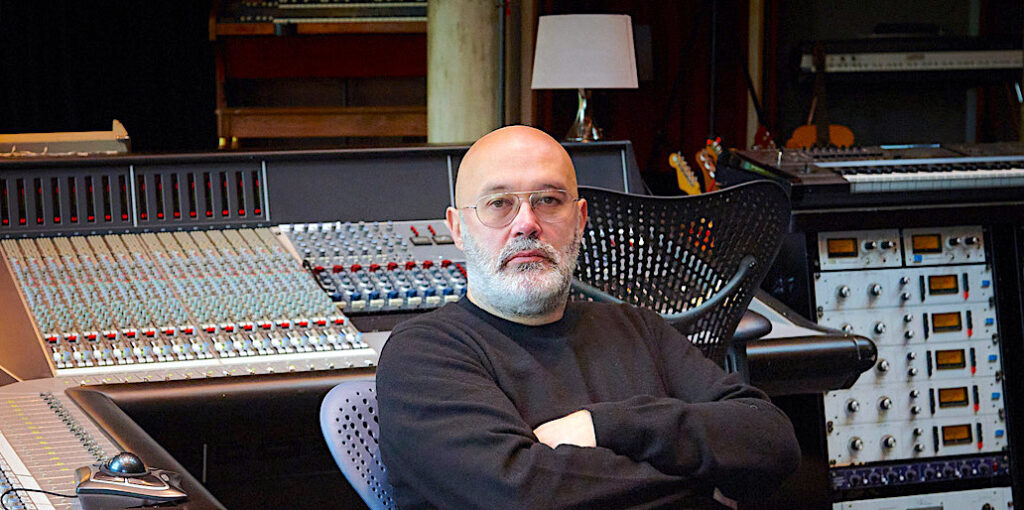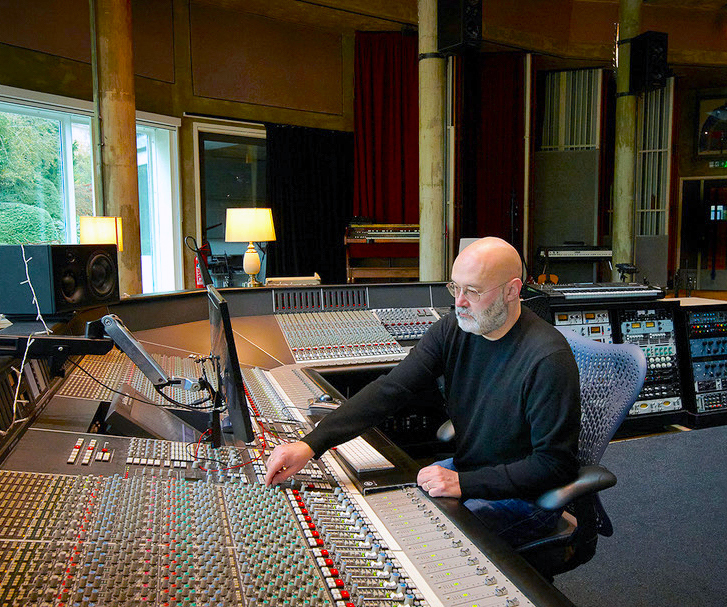Audiophiles maintain a not-so hushed reverence for recording engineers, producers, and independent record label owners. Deep down they harbor a desire to lay claim to being one, if not all, of the above.
So, imagine my surprise when I learn that Cameron Jenkins, who is indeed all of the above as well as a classically trained musician and songwriter has taken to opening his very own retail hi-fi shop/service.
This reverse arc intrigued me both as an audiophile, my hobby, and as a strategist, my day-job. Cameron worked with artists such as The Verve, John Cale, The Charlatans, Everything But The Girl, Lemon Jelly, Badly Drawn Boy, Denys Baptiste, Anita Lipnicka and Amaral, as well as recording industry notables Phil Ramone, Rupert Hine, Terry Britten, and Robin Millar.
Working with all these acts and talented colleagues, Cameron has to keep on his toes, at the forefront, on the bleeding edge of the latest recording and playback technology, and open to new platforms, so it should come as no surprise that he has strongly embraced streaming rather than shy away from it.
No doubt, Cameron knows what he’s doing in making music, from every facet, and has a handle on the music consumption and its vagaries, but Hi-Fi? I did not see that one coming from all that I’ve gleaned about his background and history, so much so that I’m prompted to question his sanity among other things. To get to the bottom of this all, to better understand this transition…
David Blumenstein: Are you mad? Audiophiles would give their … for your career, your accomplishments in the music industry, and now you want to come over to the dark side … Why? Is there something missing in your life, some void which you believe can be filled with the launch of Stranger High Fidelity?
Cameron Jenkins: Ha! Yes, the dark side. I must admit a few friends have given me an inquisitive look recently. But I had a few inquisitive looks when a few months after having a number one album producing The Verve, I decided to step back from the studio for a while and start a record label. Now that was pretty crazy and the raised eyebrows were probably justified. It turned out ok though. Maybe I’m drawn to the unknown. I like being busy and delving into things I love. And yes, there was a little void to be filled. Stranger High Fidelity is an adjunct to the other things I do, and I think it fills a space well. I’m still going to write, produce and engineer, fulfilling the creative, I’ve still got the label, which I want to take in a different direction and which provides a path for the created product, and now with SHF, I’ve got a vehicle to champion the playback of what I love most – music.
It’s counter-intuitive that there should be a divide between the professional world and the audiophile. But it exists. Why is that? On one side is the artist trying to convey their work through the recorded medium and on the other an audiophile trying to replicate that work as best as they possibly can. Logical. How can there be a problem? Maybe it’s just misunderstanding on both sides. Let me state firstly that I’m speaking only from my personal experience in the non-classical recording world.
I started at Power Plant Studios in 1987 which had previously been Morgan Studios. Some of the most important British artists of the 1960s and 70s had made records there and I joined just after Sade had recorded her first two albums. Owner Robin Millar soon after bought Maison Rouge. Two classic British studios, designed at the beginning of the multitrack recording. Power Plant had soffit mounted UREI speakers and Maison Rouge had horns – it was possibly an Eastlake designed room, certainly a copy of one, I don’t remember.
Here is the thing though. By this time, the mid to late eighties, the vast majority of engineers were using Yamaha NS10s as monitors. Actually, at Power Plant AR18s were more popular. NS10s had become popular at the end of the seventies in the USA with stellar mix engineers such as Bob Clearmountain. Music mixed on them had this incredible ability to translate pretty much anywhere. A whole generation of engineers grew up using them, and they continued to be used for the next 2 decades. Over the last 20 years, things have changed and now active monitors are pretty much universal, and with the demise of many great recording studios has gone the demise of big soffit mounted speakers. Walk into any recording space and you are likely to see a pair of active ATC or Focal or KRK or Dynaudio. The net result of all this is that a huge percentage of popular albums made in the last 30-40 years has been recorded and mixed on monitors that cost a tiny fraction of high-end audiophile loudspeakers. And as for cables…
For some reason, Hi-Fi has somehow come to be mistrusted because of that very fact and I don’t know why. It might just be envy. Who knows? It is human nature to compare and contrast, I guess. I have a mains cable here that costs nearly $5,000. For that sum, one of my engineering friends could buy the very top of the range Neumann valve U67 microphone. And it doesn’t compute for them. In reality, we are comparing apples and oranges. What seems to get forgotten is that, as the audiophile strives for playback perfection, the professional strives for recording perfection. To that end, there is the ongoing pursuit of vintage outboard gear and mixing consoles, for very expensive microphones. There are hours spent contrasting different EQ units, or compressors, or mic/line stages. This is before one even looks at the power of DSP plug-ins in current DAWs. I’ve just mixed a track, the first time in a while, and it struck me that I have software emulations in my laptop of pretty much every piece of analog gear I’ve ever used, from Pultec equalizers to Fairchild compressors to emulations of every tape machine ever made. And the subtleties are far more nuanced than the difference between loudspeaker cables.
DB: We are indeed living in special times. This pandemic has kicked us all in the …, so why now? What makes you think this is the right time to open a retail shop, a Hi-Fi service?
CJ:In the UK we went into our first lockdown back in March and although pretty terrifying watching what was going on, I have to admit that at the beginning it was not the worst for me. My 19-year-old son was at home and one of my daughters came back to Bath from London. For the first time, I can remember I stopped everything completely, hung out with my family, and had some time to think. I’d been contemplating SHF for a couple of years, chatting to my friend David Denyer about it and, not being very good at doing nothing, I decided to just crack on and do it. I don’t know if it’s the right time, but I suddenly had space and time to do it.
- (Page 1 of 2)
- Next page →




Looking forward to your recordings and I hope they are all in SACD format.